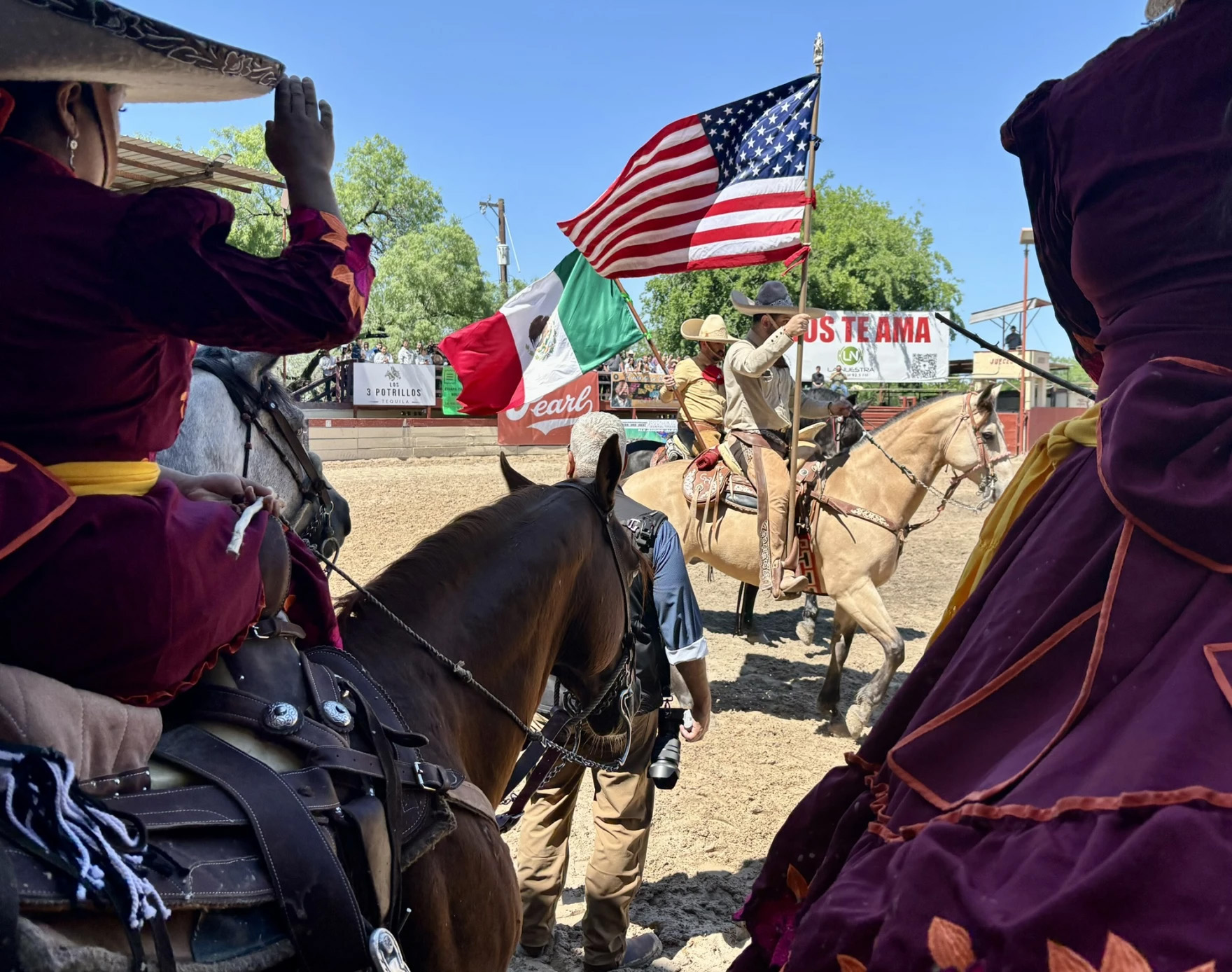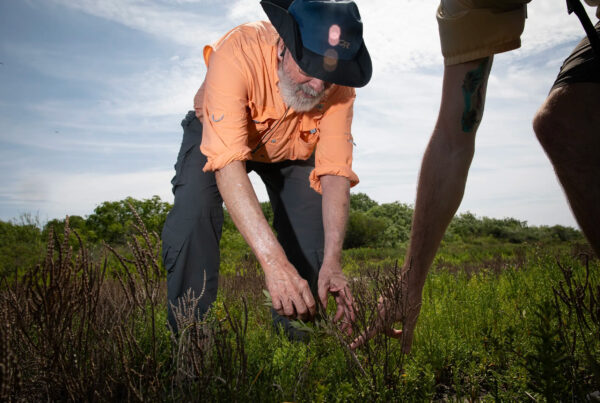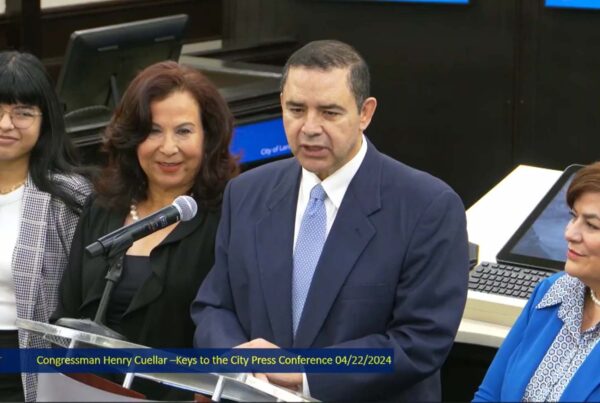From Texas Public Radio:
There’s a kind of rodeo happening on San Antonio’s South Side that is hundreds of years in the making, has nothing to do with country music and barbecue, and everything to do with tradition. It’s called Charreada, which essentially means Mexican rodeo. Its similarity to western rodeos is only fleeting, and there are many differences.
The headquarters for this version of rodeo is back behind the Mission Marquee Plaza on Padre Lane at a place called the San Antonio Charro Association, where horsemen and women meet and ride in an arena built to accommodate this style of rodeo.
On a recent Tuesday night, a team of eight young women circled a small arena, then turned to converge on one another at the center on a collision course. But, somehow, 1,000-pound horses and their riders missed each other by inches at the center, then kept on going, forming an outside circle again.
“We have to communicate with our horse very well, as well as communicate with our teammates very well to avoid crashing into each other,” explained team leader Loren Fierro-Martinez.

















